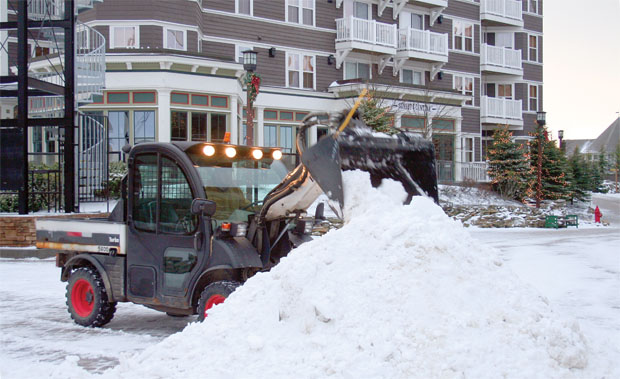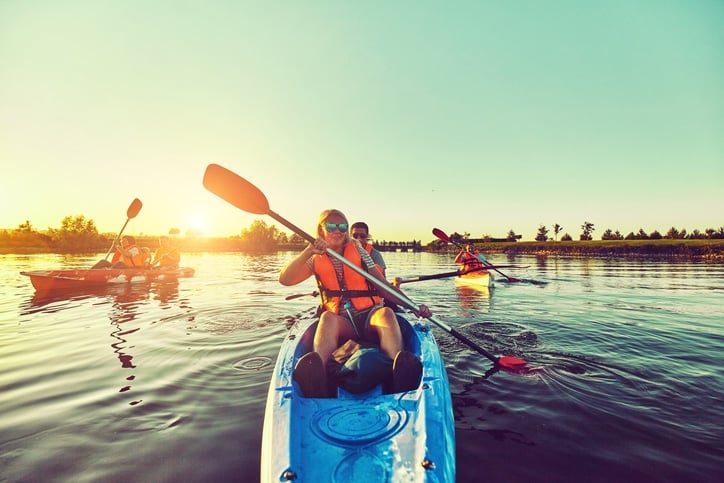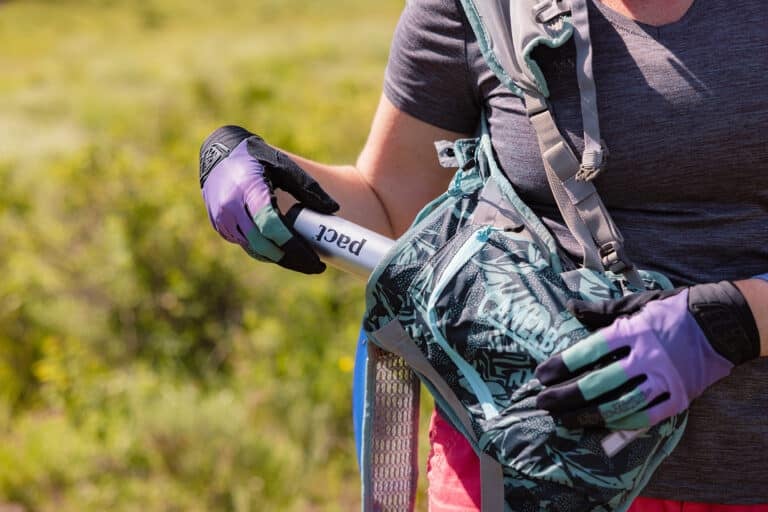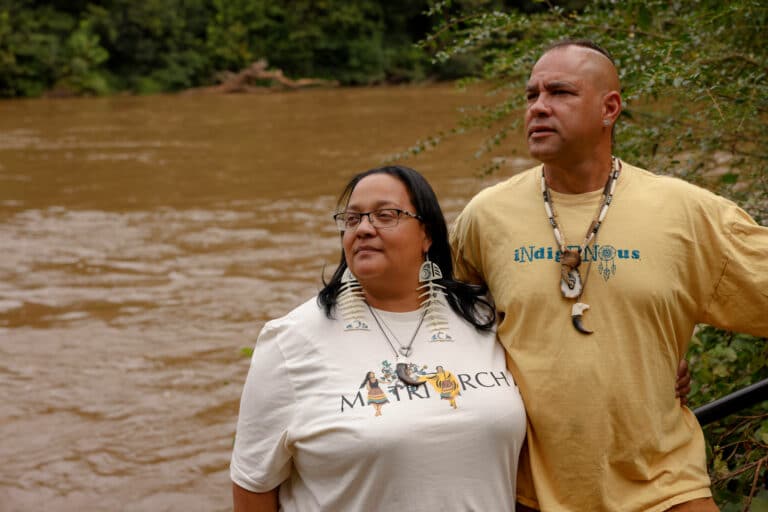How do ski resorts keep the snow groomed and the lifts running?
Sunday morning and it has not snowed in a week but you are up early anyway, waiting for the rope to drop. The air is brisk and the slope looks like a white, corrugated highway of perfect corduroy, begging to be shredded. Moments later you are ripping perfectly groomed slopes, arcing huge turns that leave your signature on the mountain. You pick up speed over a roller and launch for a split second, confident your landing will be gentle. Maybe you duck into the terrain park to catch some more air. The lips of the kickers are on plane and the transitions buttery; take offs and landings smooth as glass.
It is an epic run, but you should have seen it yesterday.
It is a peculiar phenomenon to see a ski resort on a busy Saturday afternoon, and again on Sunday morning. In no other sport is the landscape manipulated and changed like in skiing and snowboarding: every turn shifts the snow, every run modifies the slope. Snow is displaced and bumps formed from the hundreds of riders that hit a resort each day. Then, like an Etch-A-Sketch shaken by Ullr, the God of Snow, the slopes are wiped clean overnight. The moguls, slush, chunks, grooves, and ice are gone, ground into oblivion and replaced by picturesque groomed ribbons of flawlessly graded greens, blues, and black diamonds. Yesterday’s last run had been more survival than recreation, but now that same slope is the reason you love sliding on snow.
This is the miracle of the modern ski resort, but how is it pulled off? What goes on behind the scenes every day, and night, to produce the quality product you ski each morning?
A lot, it turns out.
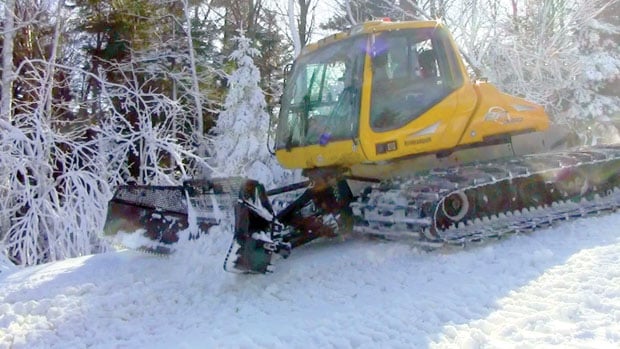
THE MAESTRO
Ken Gaitor has been working his way up through the ski resort chain of command for the better part of 15 years. Following college in Vermont, the West Virginia native relocated to Utah, working lifts before finding a niche in terrain park management. Following a move back to Vermont, Gaitor pioneered the Carinthia Park Project at Mount Snow, a first-of-its-kind terrain park that spanned an entire face of the ski resort. His experiences with park management set him up well for his current position as director of ski operations at West Virginia’s Snowshoe Mountain.
“Coming up through the terrain park world, you are relying on many different departments to be successful, so you learn how to communicate across department boundaries very well or you don’t succeed,” Gaitor says.
Although the list of departments he oversees may seem daunting – snowmaking, grooming, terrain parks, ski patrol, lift maintenance, lift operations, and vehicle maintenance – like any good manager, he emphasizes communication as the key to things running smoothly. To this end, he spends most mornings outside cruising around the mountain checking in with the overnight groomers, then ski patrol to update slope openings and skier volume, then he takes a couple of laps for a firsthand account of snow and lift conditions. All this before the resort opens for the day.
“I think if you are going to put a good product out there, you have to be [hands-on],” he said. “For me, it’s the part I enjoy so it’s easy. I’m not as good or comfortable in the office as I am outside on the slopes, so I think where I’m most valuable is out there looking around, using the years of experience I have to spot things that maybe aren’t quite as easy for others to see.”
Gaitor is all about putting a good product out there, and making sure every facet of the resort is working together towards a common goal. On the surface, during the daylight hours, a ski resort can appear to be calm and laid-back but pull back the curtain and you’ll find a controlled chaos of activity, especially after the lifts stop spinning. Most of a resort’s heavy lifting happens overnight.
THE SNOWMAKER
The most crucial job on any ski mountain in the East, and probably the most thankless, is that of the snowmaker. You may occasionally spot an active snow gun during the daytime, but the vast majority of snowmaking goes on during the dead of night. This underscores one of the harsh physical realities of making snow: you can only do it when the temperature is below freezing.
“Without the snow, we’re going nowhere,” says Gaitor. “The way the job works – guys out there 24 hours a day, through the dark of night, in the elements, pretty dangerous job – it takes a certain character, a certain toughness, to be able to hang in there and do that.”
This doesn’t stop some from getting snowmaking in their blood. Gaitor says he has guys on staff who have been making snow for over 30 years, who have found their calling on the slopes. While most cringe at the thought of being on call 24 hours a day, working through the night dragging hoses and heavy equipment up and down a mountain in freezing temps, the job does have a certain appeal.
“I think [snowmakers] understand the importance of the job for one thing, and are passionate about skiing and snowboarding and want to make their personal experience better and that helps them understand what [the snow] is supposed to do,” says Gaitor. “Another big thing about snowmaking I think helps people, and I know helps me, is the instant gratification. You can fire up a snow gun on a cold night and come back an hour later and you have a big pile of snow. It’s something you can touch and feel and it’s happening fast so you can see the changes that you’re affecting.”
Instant gratification is great, but getting a big pile of snow is only half the battle. The other half is getting it into shape.
THE GROOMER
I am riding shotgun in a snowcat as Jamie McCourt explains the nuances of his eight-ton grooming machine. The blade in front goes up and down like the front of a snowplow, pushing and cutting the snow, but the real action happens in the back. Trailing the cat’s wide double tread tracks are the tiller and the compression skirt. The tiller grinds up the uneven snow, and the compression skirt smooths it down into the familiar ribbed pattern that adorns slopes at every resort in the world. All this is controlled by a vast array of toggles, switches, and a complicated joystick that looks strikingly similar to Tom Cruise’s from Top Gun, only with more buttons. McCourt’s head is on a constant swivel, checking the tiller depth, the blade’s load, and his machine’s angles. He makes continuous minute adjustments, compensating for slope angle, speed, and snow quality.
“Your tiller is designed to take from the high and add to the low, but you still have to make it pretty smooth with your blade before the tiller can do its job,” McCourt explains. “You get your wet man-made snow, your dry natural snow, your old man-made snow, new man-made snow, mix it all together, and it usually makes the best quality snow.”
Groomers are experts in snow quality – McCourt says some of the best groomers come from the snowmaking department because they know the snow. Groomers work closely with the snowmakers to manage the snow on the slopes, but also to avoid getting in each other’s way: they typically occupy the same space at the same time during the night. McCourt tells stories of having to navigate around snow guns based on sound because of the whiteout they create at full operation. He has been driving a grooming machine for six winters, but insists it never gets old.
“It becomes an extension of yourself over time and you never stop learning,” McCourt said. “Even the guys who have been doing it for years will tell you the same thing. It actually becomes second nature, you’re hitting all these switches and you don’t even know you’re doing it.”
McCourt likes to take a few laps in the morning following his overnight shift, a well-deserved release after a night in the cockpit. A snowboarder himself, he takes great satisfaction in the product he puts out for the public each day.
“It’s one of the most rewarding jobs I’ve had for sure,” McCourt said. “When you go home it feels good to know that what we did through the night turned out right.”
Before piloting a groomer, McCourt was on the terrain park crew and uses that experience to his advantage. Now a park grooming specialist, he works closely with the park manager to form good lines and transitions for features like butter boxes and kickers.
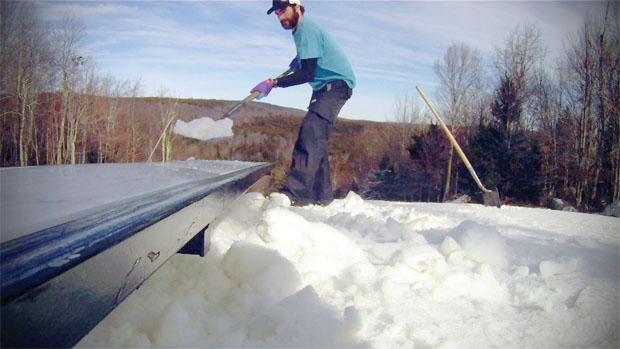
THE PARK CREW
Of all the jobs on a ski hill, the terrain park crew probably gets the worst rap. You may think the park crew is a bunch of slackers who don’t take their job very seriously, but Snowshoe Terrain Park Manager Seth Boyd insists park crew is not all goggle tans, swag, and high fives. Early mornings are spent buffing lips and take offs, and days are spent raking, shoveling, and more raking, something Boyd says his 11-person crew takes pride in even if you see them riding during the day.
“We try and stay out during the day, raking as much as we can. On a busy day, it can get pounded out. If we keep it crisp, if the park looks awesome, we can take a lap around and make sure everything rides well, too,” he said. “That’s in our job title: testing features.”
The crew is responsible for keeping park features in safe condition for the public and this translates into a lot of planning during the off- and pre-season. During the summer, Boyd and his squad build and repair most of the hardware in-house for Snowshoe’s six terrain parks. This includes standards like rails, but also improvised features like recycling industry barrels and drums into usable obstacles. Putting the features on the mountain is far from random, it takes experience and creativity to make a terrain park a terrain park and not a random assortment of rails and jumps scattered across the slope.
“We just kind of feed off each other – you know, “What do you think would look good there?” – and come to a mutual agreement between the crew,” said Boyd. “All the guys, they ride all the time and are always in the park, walking around seeing what people like to hit, what they don’t like to hit. That gives us a pretty good overview of what we think would look good there. We try to have good, flowy lines with the rails and get creative with it.”
It is remarkable what can happen between closing and opening: the hill is literally transformed overnight from a skied out mess to a glassy delight. While all this hard work may go unnoticed to the casual skier, it is not lost on Gaitor even after 15 years in the game.
“A lot of what’s out there in the morning when people first hit the slopes, it almost seems like the Tooth Fairy or something comes through in the middle of the night and puts the trails back together,” said Gaitor. “There is all this work that happens while people are in bed or having a drink after dinner. Knowing that people are out there working hard to build that product back for them the next day and make it even better is probably the most impressive thing to me.”
So the next time you set your edge on a groomed slope, session a rail, or ski a sliver of white in a sea of brown landscape give thanks to those who put the time in during the night. It’s a tough job, but someone has to do it. •
